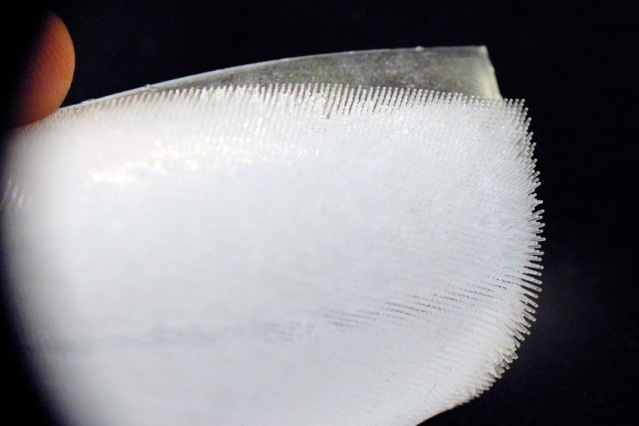Inside our bodies are millions of tiny carpets of hair, ranging from the tips of our taste buds right down to the superfine protein strands that run throughout our blood vessels. Each of these types of hair bends and twists along with the current of the fluid is situated in. Engineers at MIT have now found a way to predict the way these tiny hairs will move in response to fluid flow and in doing so they’ve discovered that while stiff hairs tend to stay upright in fluids, dropping hairs tend to slow fluid flow.
However, during the research, the team also discovered there is one particular spot in hairs, where if bent just at the right angle, will affect any fluid passing through them. These finding may help engineers come up with new microfluidic device designs. Anette (Peko) Hosoi, the Neil and Jane Pappalardo Professor of Mechanical Engineering and associate dean of the School of Engineering said, “These angled hairs can be used to make a fluid diode that switches from high resistance to low when fluid flows in one direction versus another.”
In order to take a closer look at the behavior of small hairs in response to flowing fluid, soft beds of hair were fabricated then any holes were filled with liquid polymer. They made each bed with a different density, angle, and elasticity to one another. Once the polymer had set, the polymer hair beds were removed from the molds. Jose Alvarado, the lead author on the paper and MIT postdoc, said, “The densest ones are comparable to short-hair cat fur, and the lowest is something like metal hairbrushes.”
By placing each hair bed in a rheometer the team was able to get a closer look at how the hairs responded to flowing fluid. They also measured the torque generated as the outer cylinder is dragged along by the liquid. This measurement can then be used to calculate the liquid’s viscosity. “What is surprising is what happened with angled hairs,” says Alvardo. We saw a difference in impedance depending on if the fluid was flowing with or against the grain. Basically, hairs were changing shape, and changing the flow around them.”
To further test this the team developed a mathematical model that characterized different soft hair beds’ behavior whilst in flowing fluid. They created a formula that considered variables such as the viscosity of the liquid and the dimensions of the hair to calculate a figure called rescaled velocity. In doing this they found that if the rescaled velocity is too low hairs will only bend slightly, but if too high, they will easily bend or become deformed in fluid flow.
Alvardo is hoping this new model will help engineers come up with new designs for microfluidic devices that include angled hairs that direct the flow of fluids across a chip. Hosoi says, “Computers and cell phones were made possible because of the invention of cheap, solid-state, small-scale electronics. On hydraulic systems, we have not seen that kind of revolution because all the components are complex in themselves. If you can make small, cheap fluid pumps, diodes, valves, and resistors, then you should be able to unleash the same complexity we see in electronic systems, in hydraulic systems.”
More News to Read
- Is the Cure for Blindness Hiding in Video Goggles and an Implant?
- Astronomers Observe Cosmic Jellyfish Feeding Supermassive Black Holes
- Research Detects Alzheimer’s Disease Might Have Markers in Apes
- Fast Custom Made Robots Made in a Number of Minutes
- The Vinpok Bolt Brings back Magnetic Safety to Power Cords

